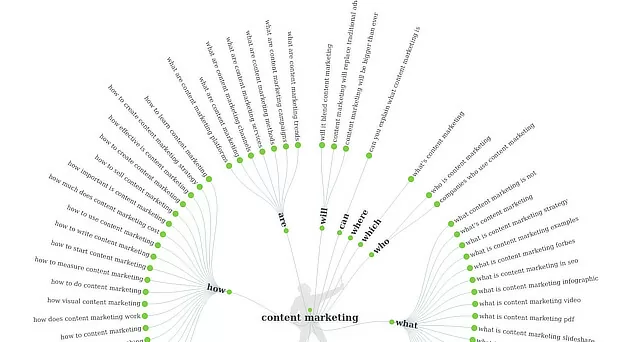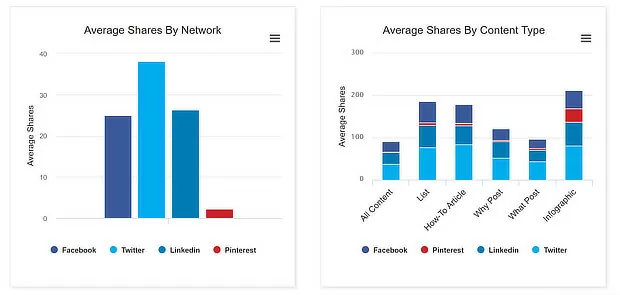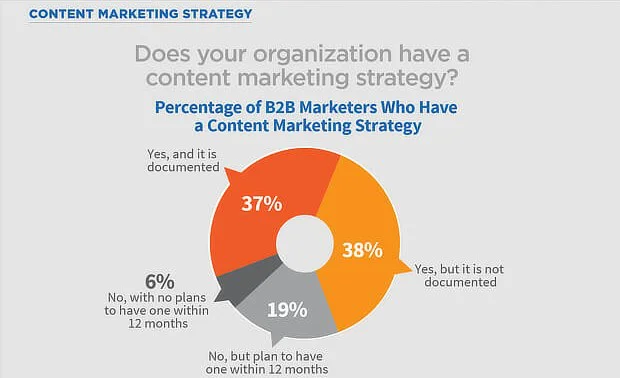Content Marketing Analytics don’t just provide information about your marketing; they provide you with the data that can transform your strategy and allow you to make better business decisions. To fully take advantage of Content Marketing Analytics, here are nine ways to use data to transform your Content Marketing Strategy.
Leverage content performance data
When using data from your content marketing analytics platform, look beyond clickthrough rates and website traffic. You can also dig into such areas as bounce rate, time on site, and average pages per visit to help determine what’s working—and what isn’t. Incorporating these data points into your long-term strategy helps you pinpoint weak points and make improvements based on actual performance results rather than subjective opinion.
For example, an increase in bounce rate could indicate that a piece of content isn’t as engaging as it could be or that your messaging is lacking clarity; implementing changes based on that data can help you avoid wasted efforts in future projects.
Get clear on your metrics
Before you do anything else, make sure you have a clear picture of what success looks like for your content marketing strategy. Ask yourself: What’s my goal? Will it be measured in leads, conversions, or dollars?

Don’t be afraid to get specific. How many new customers will I need to generate each month with our content marketing efforts? How much revenue will I need to increase by next quarter? It might seem daunting at first, but once you know where you want to go, it’ll be easier to figure out how to get there.
Understand what type of content performs well and why
Everyone is looking for data that supports their strategies, but you’ll want to be sure you aren’t missing what isn’t there. If a content type performs well, it might not mean it will work in your environment; similarly, if a piece of content doesn’t perform well in one place, it doesn’t mean it won’t work somewhere else. In other words, just because an infographic can drive more traffic than a white paper or because video drives more social media engagement than text-based posts doesn’t mean that every brand should be using infographics and video all of the time. Take notes on what works and why—and make sure you aren’t making decisions based on bad data!
Measure the social impact of your content marketing strategy
One of the most overlooked and underutilized sources of data for content marketing is social media. You probably know you need a Facebook Page, but other platforms offer some incredible insights into how your strategy is doing.
For example,
- Reddit allows you to see what users are saying about your brand and content – and engage with them directly.
- Twitter can help provide an idea of whether your audience actually uses something you’re trying to promote (if they don’t, maybe it isn’t a good idea).
- LinkedIn insights can even show you which industries are talking about certain topics – so if one platform is getting little action, it might be time to try another one that provides more insight into your target audience.
Look beyond vanity metrics
One of the biggest mistakes content marketers make is putting too much emphasis on vanity metrics.
For example, how many followers you have on Twitter or likes you get on Facebook. If you want an effective content marketing strategy, you need to focus on a metric that matters: your audience’s engagement. You can do this by analyzing data from tools like Google Analytics and SurveyMonkey Audience.
Dig deeper into customer data
Make data-driven decisions, drive your content marketing strategy with measurable metrics and make sure you have data on hand that proves content is working. You’ll be able to see which pieces of content resonate with your customers, what drives clicks and conversions, what times of day are best for promoting certain types of content, which channels work best for delivering your message and much more. With these analytics you can get a deeper understanding of how you can use data in order to transform your overall strategy.
Experiment, experiment, experiment!
Don’t worry: you don’t need a super-advanced degree in data analytics or an entire marketing team on your payroll. That doesn’t mean you can ignore data, though. It’s just that there are plenty of low-hanging fruit—easy, actionable insights—that almost anyone can get their hands on.
Overcome measurement barriers in your organization
Regardless of how much data you’re collecting, there are three major obstacles that will undermine your attempts at transforming your content marketing strategy into a measurable process. The first is internal measurement barriers. Companies like Salesforce, HubSpot and Oracle have made it possible for anyone with a laptop and an internet connection to measure inbound marketing efforts like never before. This can lead to information overload – and even paralysis – if you don’t have staff or time devoted exclusively to measuring results. Even if you do, trying to collect data from across different departments can be difficult and expensive, especially for small businesses that may not have their own IT departments (or dedicated business intelligence departments) on hand. The good news?
Generate insights from customer data to inform future marketing plans
It’s important to know who you’re trying to reach, where they are and what media works best for your audience. Once you have that data, use it as a basis for ideation—beginning with your most successful campaigns and refining from there. If one method worked particularly well, try it again. If another didn’t work as expected, tweak it or try something else. Always be looking at analytics; it’s vital to know how your efforts are paying off in order to do more of what works and less of what doesn’t. By looking at data in a variety of ways you can gain new insights into how customers think (and how they don’t) that will help inform future strategies even further.
Conclusion:
If you’re creating a strategy around content marketing, it’s only right that you use data to inform decisions and make your content more effective. Think of data as an essential resource—not just a way to measure success, but also a way to inform what that success means.
Remember: There are no bad questions. If you don’t know something, ask! Leverage research tools like Google Analytics and talk with your audience directly through surveys and polls on social media platforms. In today’s digital landscape, there is almost certainly someone out there who can help you solve any problem you run into—but first, make sure that problem exists at all by staying in-the-know about what people are saying about your brand.




